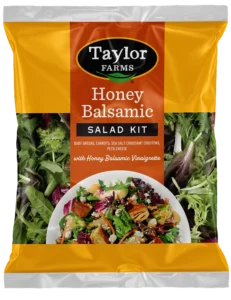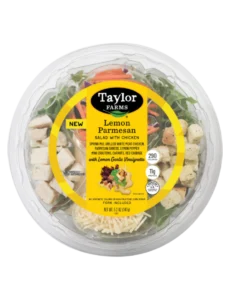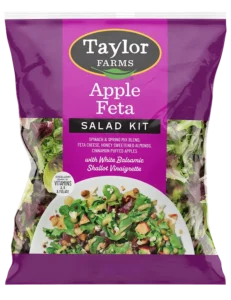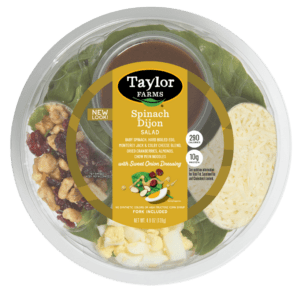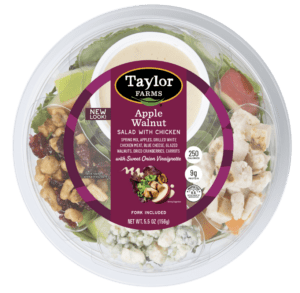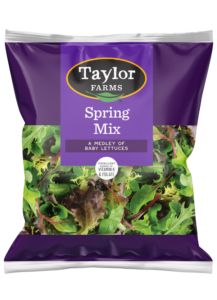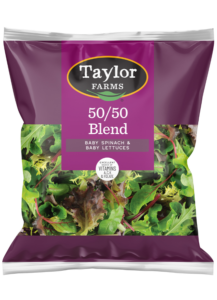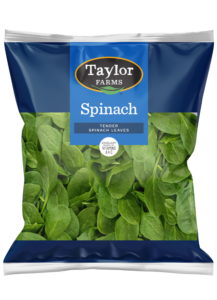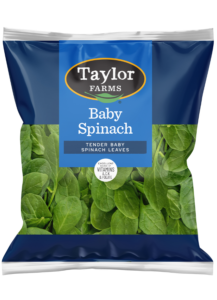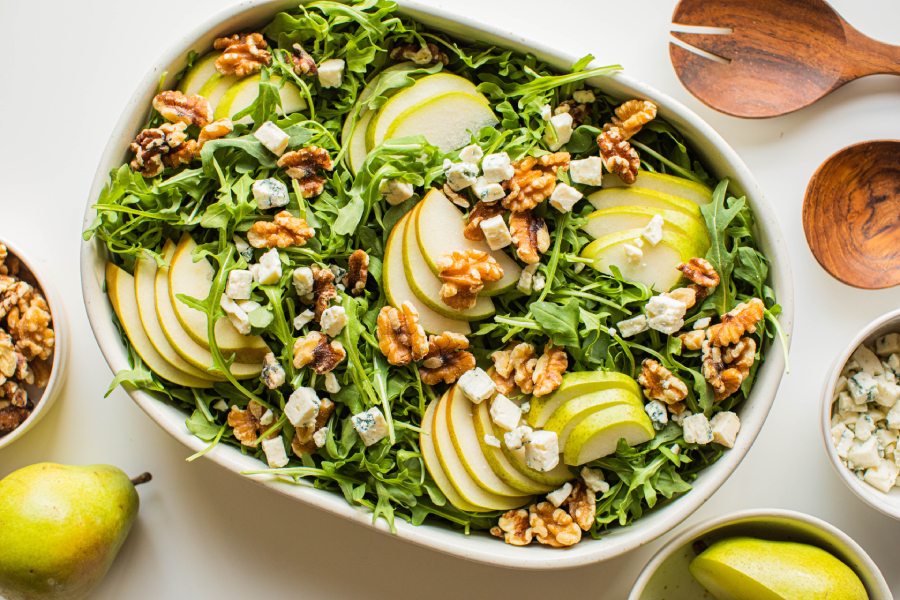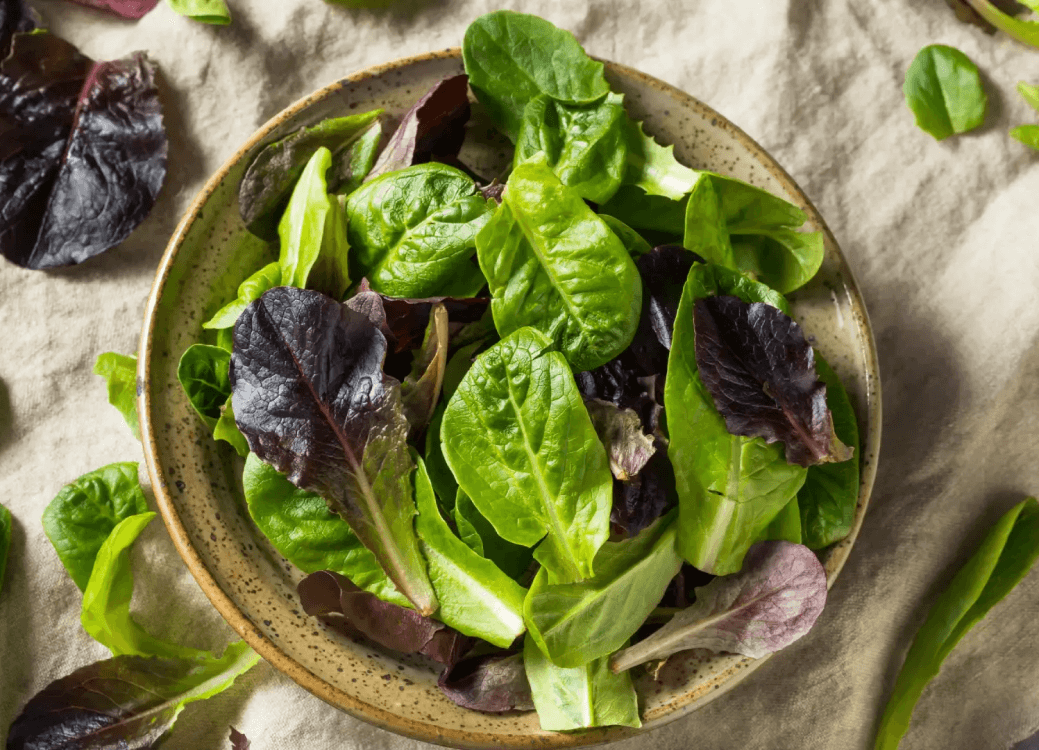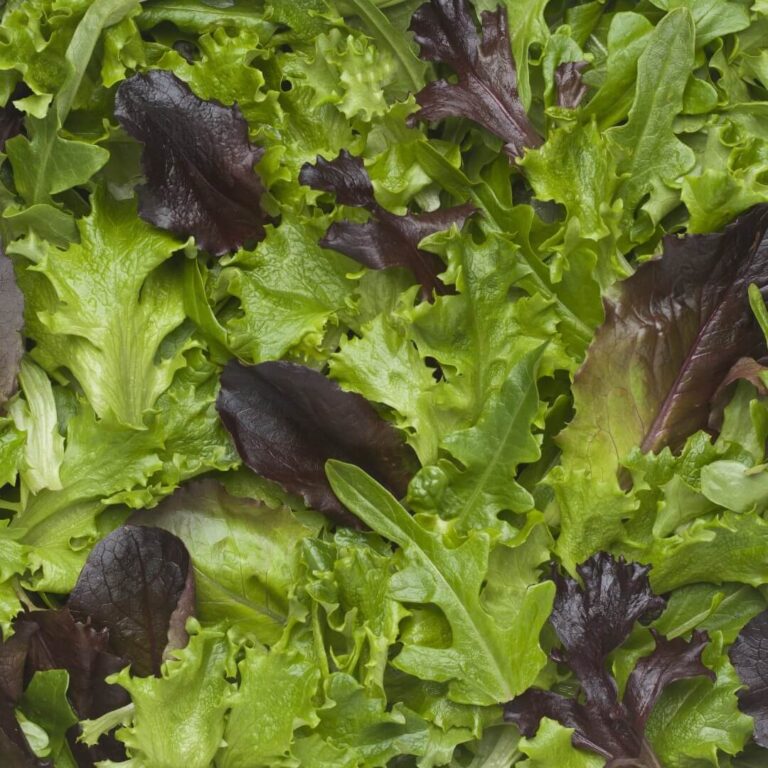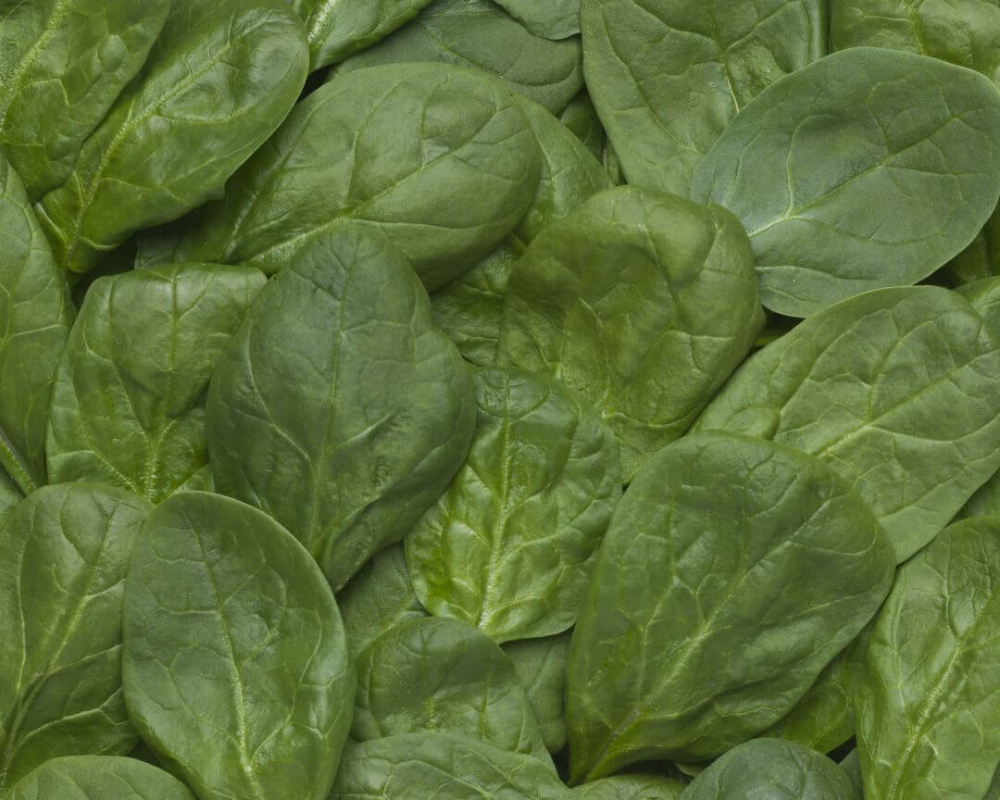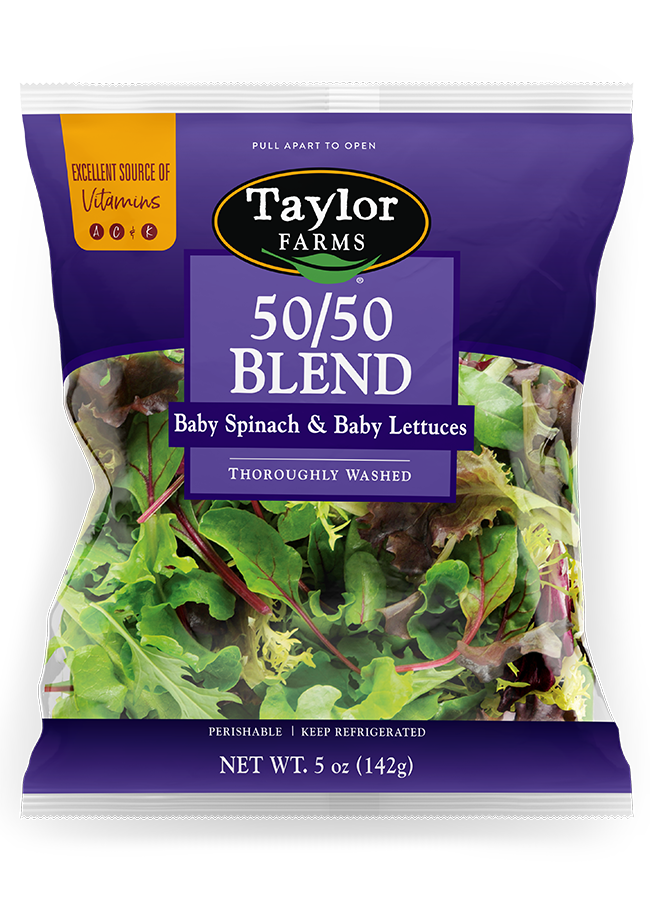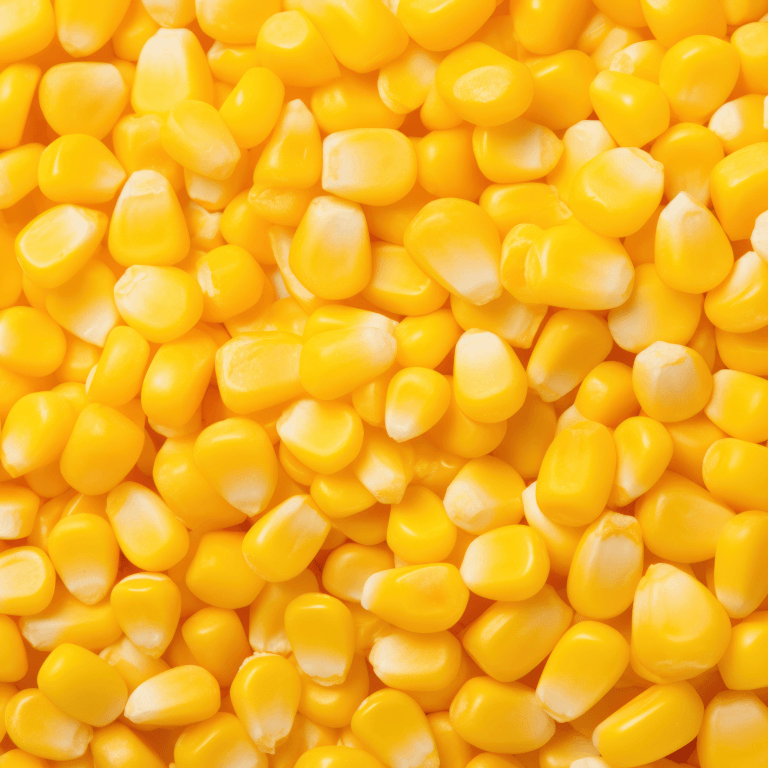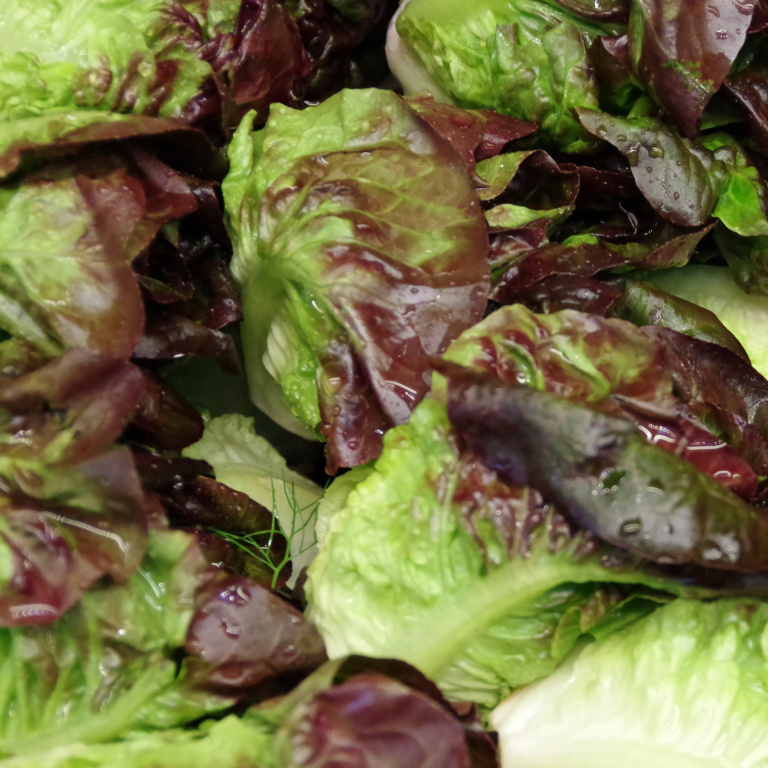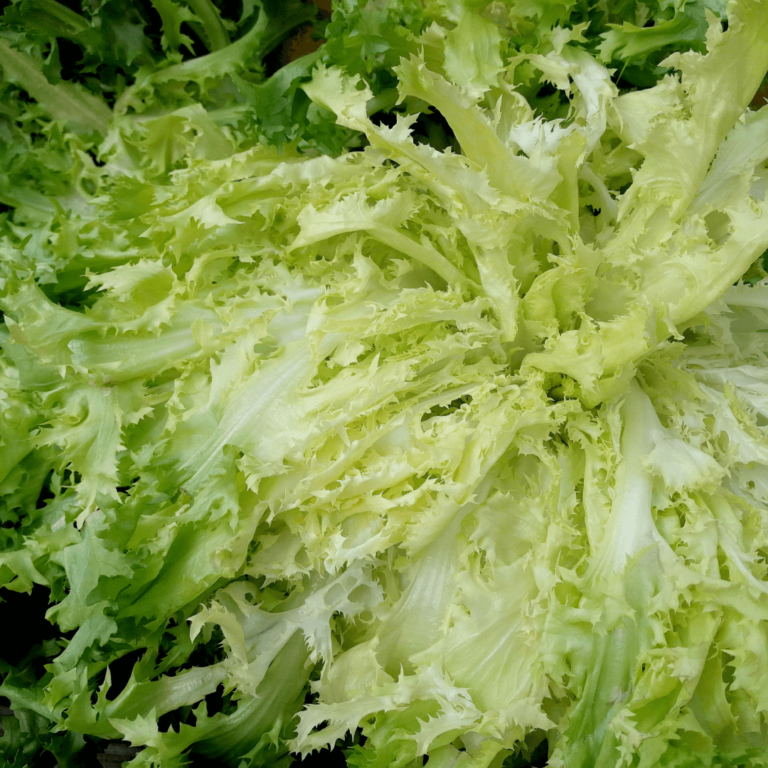Spinach at a Glance

Scientific Name: Spinacia oleracea
Family: Amaranthaceae
In Season: Fall and spring, but available year-round
Varieties: Savoy (curly leaf), Semi-Savoy, Flat-Leaf, and Baby
Great for: Salads, sautés, baking, smoothies, and as an ingredient in many main dishes due to its high nutritional content, mild flavor, and adaptability.
Spinach Nutrition
Rich in Vitamins A, K, and C
Good source of iron, calcium, and magnesium
Packed with Antioxidants
Common Questions about Spinach
When enjoyed raw, spinach has a clean, crisp taste that is slightly sweet with a mild, somewhat earthy undertone. This subtle flavor profile allows it to pair well with most ingredients without overpowering them, making it a popular choice for salads and smoothies. Raw spinach also has a refreshing crunch when the stems are left on, adding a bit of texture to dishes.
Once cooked, spinach undergoes a transformation that brings out a slightly different taste profile. Mainly, the sweetness recedes and allows earthy, more complex flavors to take the lead. Spinach’s mild bitterness also tends to mellow out when it’s cooked, making it more palatable for those who may be a bit sensitive to bitter flavors.
Cooked spinach’s texture is also drastically different from its raw form, losing its crunch and becoming more soft, silky, and almost creamy, which can often add a unique and pleasing mouthfeel to various dishes. Whether it’s wilted in a sauté, baked into a quiche, or simmered in a soup, cooked spinach infuses dishes with its distinct yet subtle flavor.
Growing Spinach
If you are growing your own spinach, you can start harvesting it as soon as the leaves are about 3 to 5 inches long, which usually takes about 40-45 days after the initial planting.
Harvesting spinach is simple: just cut the entire plant off at the base or pick only the outer leaves. This will allow the center of the plant to continue producing.
Purchased Spinach
When buying spinach from a grocery store or market, it’s ready to eat as soon as you bring it home. Try to find spinach with fresh, vibrant green leaves that are not wilted, discolored, or overly bruised. Avoid any spinach with yellow or brown spots, as these are signs of age and decay.
Before eating, always wash the spinach thoroughly under cold running water to remove any dirt or potential pesticides. (Taylor Farms spinach is thoroughly pre-washed and ready to eat — no need to wash it yourself.)
Fresh spinach can be stored in the refrigerator for about a week. After that, it may start to wilt or become slimy, which are signs that it’s no longer good to eat. Always discard any spinach that has a bad smell, as this is also a clear indication that it has spoiled.
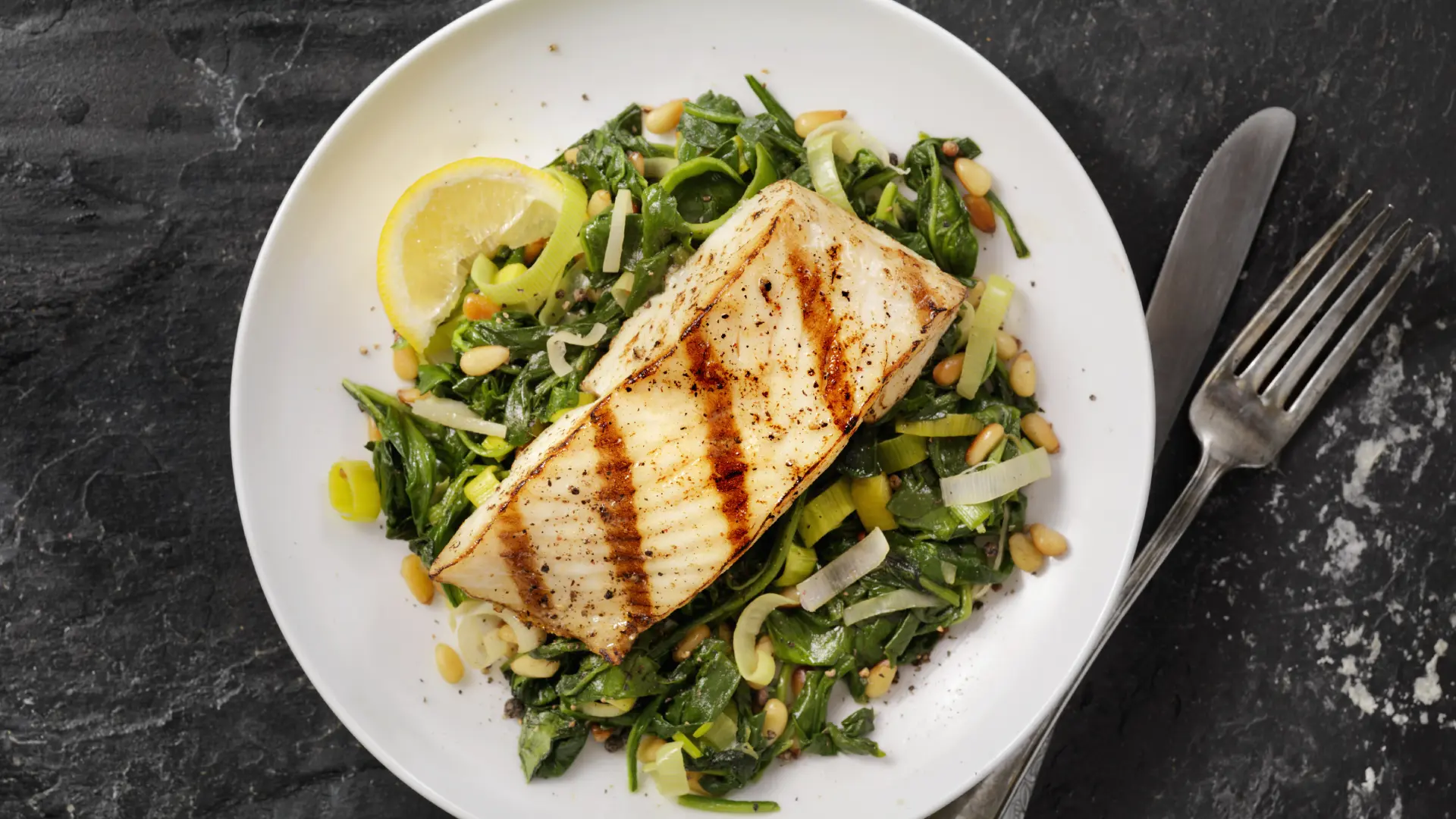
How to Cook & Serve Spinach
Spinach can be prepared in a variety of ways, each enhancing its flavor and nutritional profile differently. Its mild taste pairs well with a range of foods, including eggs, pasta, grains, fish, poultry, and other vegetables.
Sautéed: This method involves quickly cooking spinach on high heat with a bit of oil or butter. It’s usually seasoned with salt, pepper, and often garlic. Sautéed spinach can be served as a side dish or used as a component in pasta, omelets, or stuffed into chicken breasts.
Steamed: Steaming preserves the nutrients and vibrant color of spinach. This method of preparation gives spinach a more tender texture that pairs well with a drizzle of olive oil, lemon juice, or a sprinkle of your favorite spices. It’s perfect alongside fish or grilled meats.
Baked: Spinach can be incorporated into casseroles, quiches, and lasagnas and goes especially well with cheesy dishes.
Blanched: This involves briefly boiling spinach and then immediately plunging it into ice water. It’s an ideal method for preserving spinach’s bright green color and removing any bitterness. Blanched spinach is excellent in salads or even as a vibrant green garnish.
In Soups and Stews: Spinach can be added to soups and stews during the last few minutes of cooking, which provides subtle flavor and added nutrients without overwhelming the dish. It pairs extremely well with lentils, beans, and a variety of vegetables.

